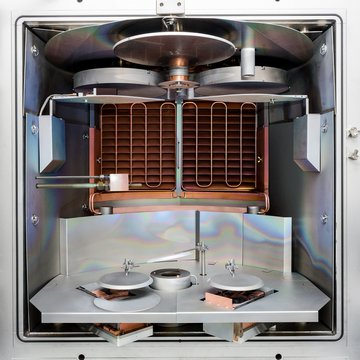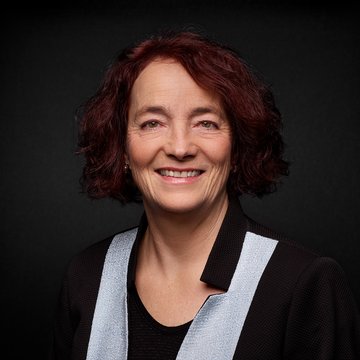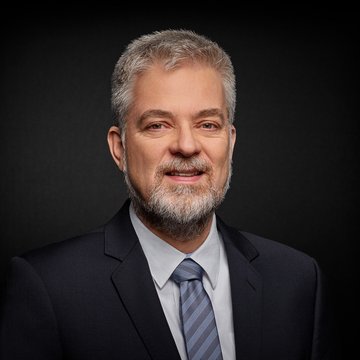Optics Production – Technology and Know-how for the Customer


The rapid technical progress in laser technology is constantly opening the door for new areas of application. The demands on laser optics are correspondingly diverse. By consistently investing in personnel and technology, LASER COMPONENTS is able to remain on the cutting edge of development and fulfill even the most extraordinary customer requests. Where is this journey heading? We spoke on this topic with Barbara Herdt, head of the laser optics business unit, and Christian Grunert, head of production.
Photonics News:
Mrs. Herdt, what do you see as the greatest challenges of the next – let’s say, five – years?
Barbara Herdt:
The technical possibilities made available by laser technology have evolved since we entered the optics manufacturing business. Today, we are dealing with an extremely wide range of laser types, each of which places highly specific demands on the optics. This range extends from petawatt lasers for research facilities to ultrashort pulse lasers in micromaterial processing to cw kilowatt lasers for cutting and welding in industry. In the first two cases, the main issue is the laser damage threshold, while the main challenge for cw optics is achieving the lowest possible absorption. In addition, the entire wavelength spectrum is now being used. Thanks to new technologies in microchip fabrication, the UV range especially has grown very strongly in recent years. We expect new developments in each of these segments. As a manufacturer of customized solutions, we must ensure that we have the skilled personnel, the production facilities, and the measurement capabilities to be able to respond quickly to new requirements with our usual high quality.
Photonics News:
What role do your colleagues play when it comes to responding flexibly to these different customer requirements?
Barbara Herdt:
You could say that they are our most important asset. Our sales team is not made up of classic sales representatives but rather – without exception – of highly qualified optics experts who can find the right solution even for unusual requirements. When our customers contact us, they know that there is an engineer at the other end who understands exactly what is important to them. At the same time, they know the technical capabilities of our manufacturing department and what we can do.
Christian Grunert: And in production, we know exactly what we need to do to turn the customer’s specifications into a finished product. For example, we can reduce the absorption of the optics by using different polishing processes or making changes to the substrate material. Many of our colleagues working at the coating machines have been with the company for ten or more years and know their equipment inside out. These people often find creative solutions that allow us to expand the potential of the machines beyond their technical specifications.
Photonics News:
Is it possible for customers to only order a single optic with highly specific specifications?
Christian Grunert:
That happens, of course. In fact, it is precisely for these orders that we decided years ago to also produce substrates in house. If necessary, we manufacture individual lenses, the imaging properties of which meet the customer’s requirements.
Barbara Herdt:
Of course, this is somewhat more expensive than mass-produced goods from the Far East. But we also deliver controlled quality. Anyone who installs our optics can be sure that there will not be any problems with them. Today’s laser systems often consist of a dozen optics. When a problem occurs, you have to check each one of them to find the underlying cause. The bottom line is that this is more expensive than investing in good products from the start.


Photonics News:
You have mentioned the high quality of optics several times. How can you ensure that you will fulfill this promise?
Christian Grunert:
We have now accumulated an impressive array of measuring systems with which we can examine every conceivable parameter. Double checking certain performance data and having customers who place new requirements on the end product will expand our capabilities even further. Currently, our R&D team is working on further automating the damage threshold measuring station to be able to record this value even faster and more accurately. After all, a high laser damage threshold is becoming increasingly important, especially in the high-power range. In addition, we will soon have a cavity ring-down spectrometer at our disposal. This is a particularly sensitive measurement method that can also be used to measure reflection values above 99.95 percent for mirrors. Major industrial laser manufacturers now expect such values as a standard.
Photonics News:
Does this diversity also apply in other areas of production?
Christian Grunert:
Yes. For example, we can choose from three different coating processes. Each of them offers specific advantages. In addition to the classic e-beam process, in which the coating materials are evaporated in a high vacuum, we also have systems available that work with the ion-assisted IAD and PIAD methods. We have used these, for example, to produce mirrors with edge lengths of 300 mm × 200 mm and a particularly uniform coating thickness for a major project. We also use the IBS method, in which coating material is knocked out of a solid metallic or oxide “target” by an ion beam. This imparts enormous kinetic energy to the particles, resulting in extremely dense and homogeneous coatings.
Barbara Herdt:
Especially with large optics, we will soon face challenges that we will no longer be able to map with IAD. That is why we have invested in a large IBS system, which is expected to be installed in the summer. This will enable us to produce complex large-area coatings and at the same time meet the increasing demand for IBS coatings in our usual high quality.
Photonics News:
It sounds like you will have a lot on your plate for the next little while.
Barbara Herdt:
Yes, that is most certainly true. But a rolling stone gathers no moss, so we are already looking forward to the new challenges presented by our customers.
LASER COMPONENTS Germany - Your competent partner for optical and optoelectronic components in Germany.
Welcome to LASER COMPONENTS Germany GmbH, your expert for photonics components. Each product in our wide range of detectors, laser diodes, laser modules, optics, fiber optics, and more is worth every Euro (€/EUR). Our customized solutions cover all conceivable areas of application: from sensor technology to medical technology. You can reach us here:
Werner-von-Siemens-Str. 15
82140 Olching
Deutschland
Phone: +49 8142 2864-0
Email: info(at)



